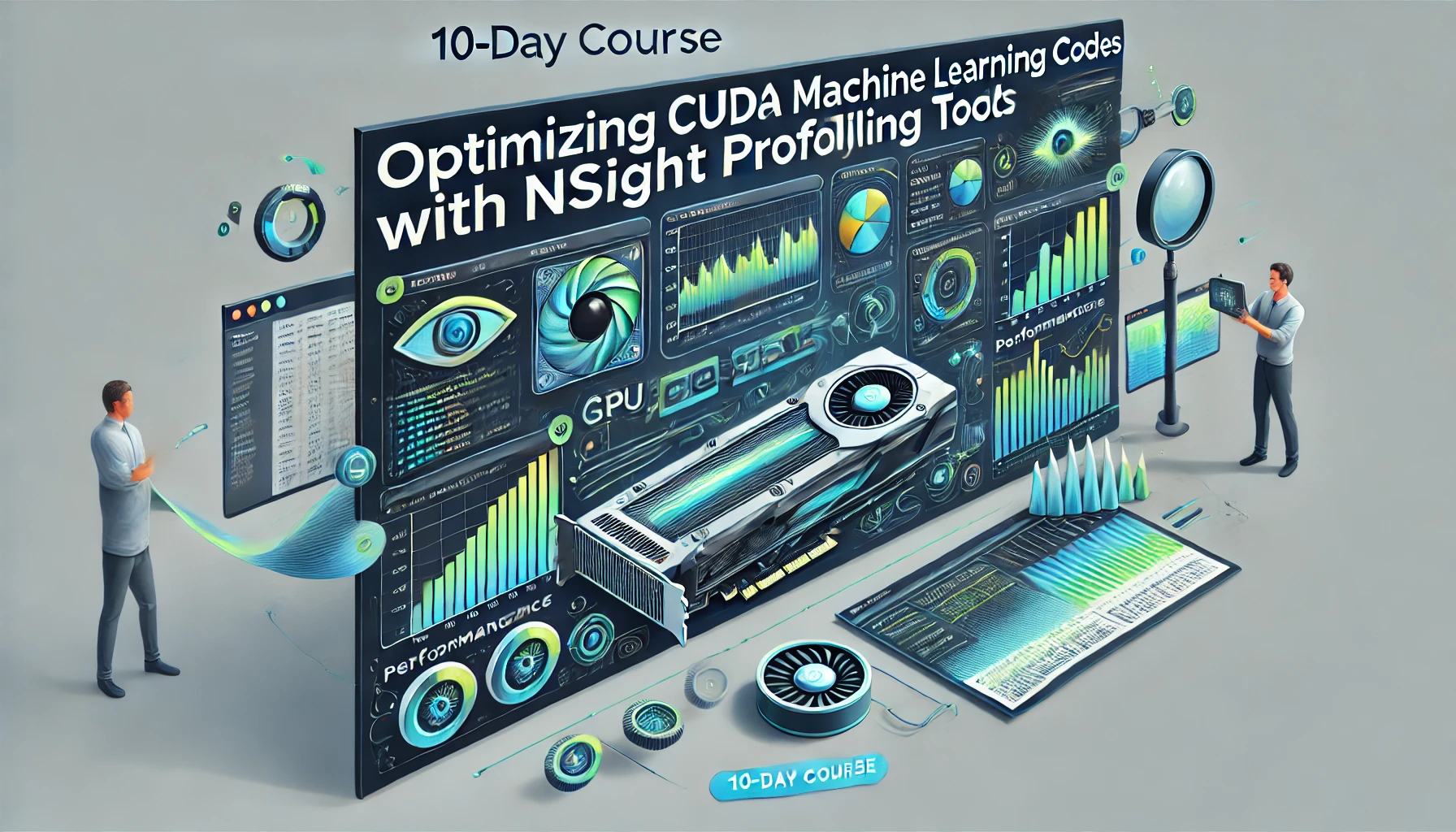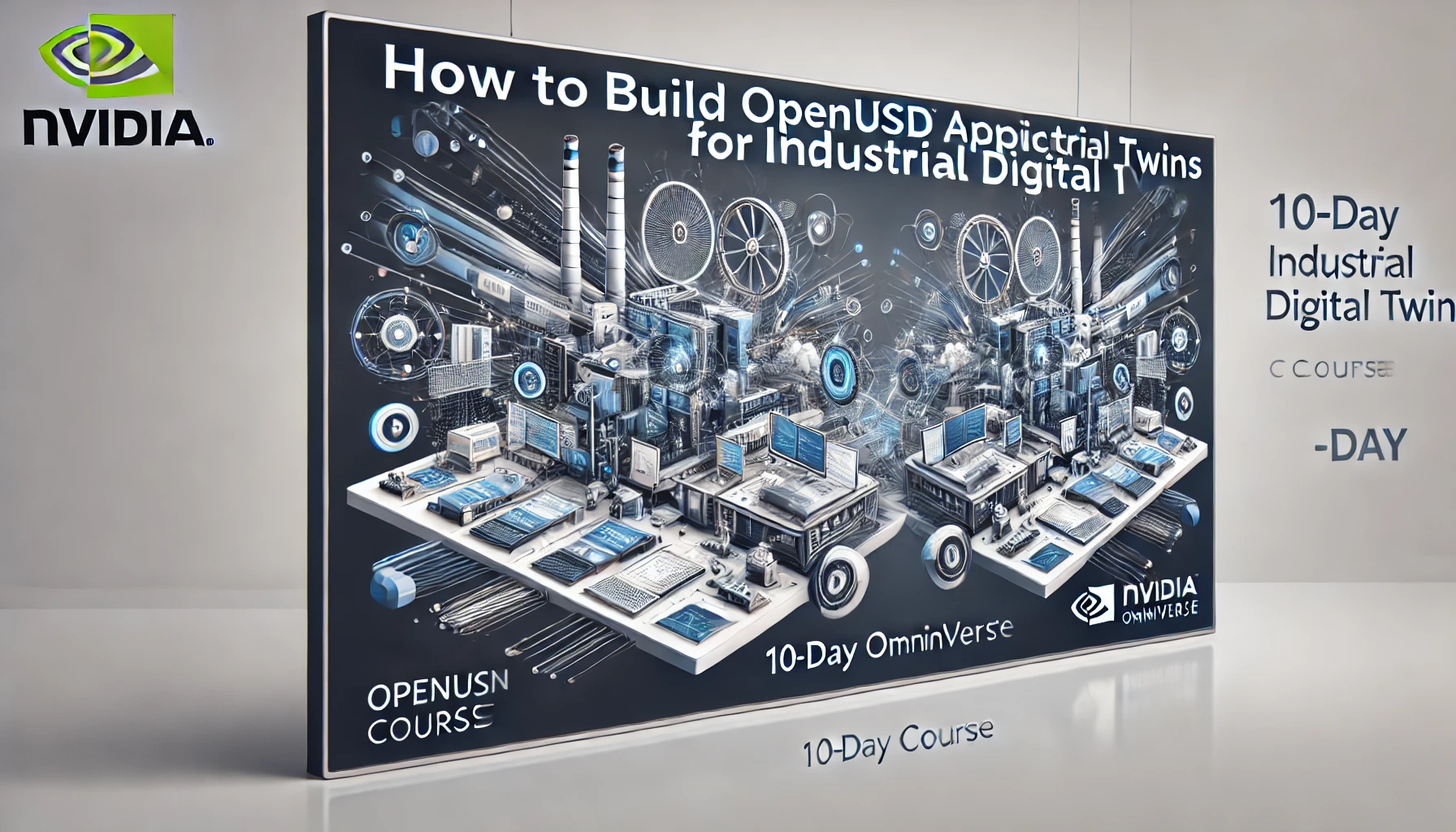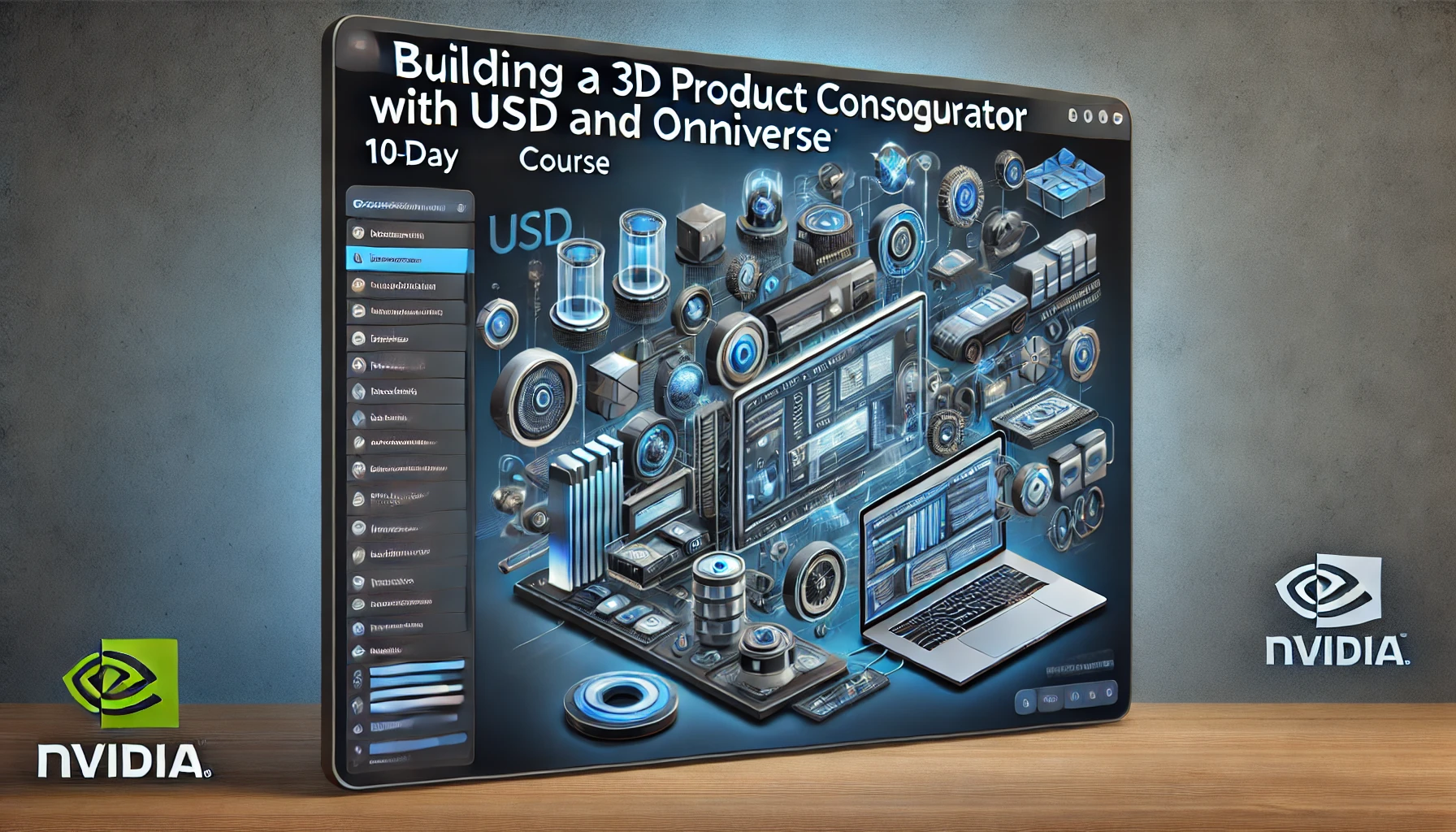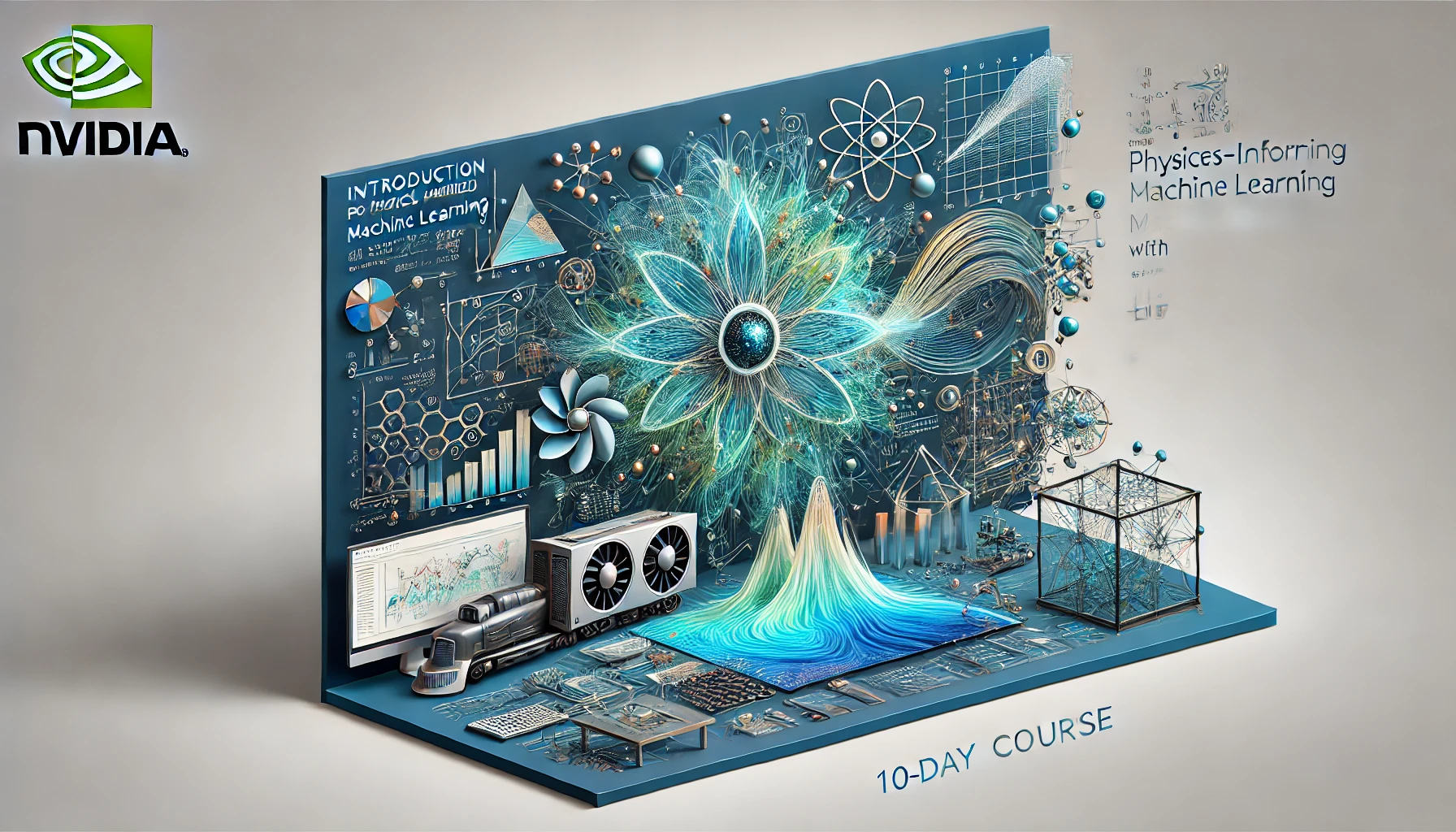Optimizing CUDA Machine Learning Codes With Nsight Profiling Tools
1. About the Course
“Optimizing CUDA Machine Learning Codes With Nsight Profiling Tools” is a comprehensive 10-day course designed to equip developers, data scientists, and engineers with the skills necessary to optimize CUDA machine learning (ML) codes using NVIDIA’s Nsight profiling tools: Nsight Systems and Nsight Compute. These tools are essential for diagnosing and fixing performance bottlenecks in GPU-accelerated applications, enabling participants to maximize the efficiency of their ML models and algorithms.
In today’s data-driven world, optimizing ML models for speed and performance is crucial for competitive edge and operational efficiency. NVIDIA Nsight Systems and Nsight Compute provide unparalleled insights into how CUDA applications execute on GPUs, making it possible to fine-tune performance and achieve significant speedups. This course takes you step-by-step from the basics of CUDA optimization to advanced profiling and performance tuning using these powerful tools.
2. Learning Objectives
By the end of this course, participants will be able to:
- Understand the fundamentals of CUDA optimization: Gain a solid grounding in CUDA architecture and the importance of optimization in ML applications.
- Use NVIDIA Nsight Systems: Profile CUDA applications using Nsight Systems to identify and understand system-level bottlenecks.
- Leverage NVIDIA Nsight Compute: Dive deep into kernel-level profiling with Nsight Compute to optimize individual CUDA kernels.
- Optimize machine learning codes: Apply profiling tools to enhance the performance of ML models and algorithms.
- Identify and resolve bottlenecks: Diagnose performance issues at both the system and kernel level, implementing optimizations to overcome them.
- Integrate optimization techniques into the development workflow: Incorporate profiling and optimization as a standard part of the CUDA development process.
3. Course Prerequisites
This course is designed for participants who have a basic understanding of CUDA and machine learning. The prerequisites include:
- CUDA Programming: Basic knowledge of CUDA programming, including familiarity with CUDA syntax, memory management, and kernel execution.
- Machine Learning: Understanding of fundamental ML concepts, algorithms, and frameworks such as TensorFlow or PyTorch.
- Linux/Command Line Interface: Experience with Linux operating systems and command-line tools, as most CUDA development and profiling are performed in a Linux environment.
- C++ Programming: A foundational understanding of C++ programming, which is often used alongside CUDA.
4. Course Outlines
This course is structured to provide a deep understanding of CUDA optimization using NVIDIA Nsight profiling tools, organized as follows:
- Introduction to CUDA Optimization: An overview of CUDA architecture and the necessity of optimization in machine learning.
- Introduction to Nsight Systems: Setting up and using Nsight Systems to profile CUDA applications at a system-wide level.
- Introduction to Nsight Compute: Setting up and using Nsight Compute for detailed kernel-level profiling.
- Using Nsight Systems for Performance Analysis: Profiling ML applications to identify system-level bottlenecks.
- Kernel-Level Optimization with Nsight Compute: Profiling and optimizing individual CUDA kernels.
- Optimizing Memory Transfers: Techniques to reduce memory transfer overhead in CUDA applications.
- Streamlining Kernel Execution: Improving the concurrency and efficiency of CUDA kernels.
- Advanced Optimization Techniques: Applying advanced CUDA optimization techniques using Nsight tools.
- Integrating Profiling into Development Workflow: Best practices for integrating profiling and optimization into the ML development cycle.
- Capstone Project: A hands-on project that involves optimizing a real-world CUDA ML application using Nsight Systems and Nsight Compute.
5. Day-by-Day Breakdown
Day 1: Introduction to CUDA Optimization
- Objectives: Understand the basics of CUDA architecture and why optimization is critical for machine learning applications.
- Topics:
- Overview of CUDA architecture
- Importance of optimization in CUDA
- Common performance bottlenecks in CUDA ML applications
- Activities:
- Reading materials on CUDA optimization best practices
- External link: NVIDIA CUDA Best Practices Guide
- Internal link: Regent Studies CUDA Courses
Day 2: Introduction to Nsight Systems
- Objectives: Learn to set up and use NVIDIA Nsight Systems for system-wide profiling of CUDA applications.
- Topics:
- Overview of Nsight Systems
- Installation and setup
- Understanding the user interface and key features
- Activities:
- Install Nsight Systems and profile a sample CUDA application
Day 3: Introduction to Nsight Compute
- Objectives: Set up and use NVIDIA Nsight Compute for detailed kernel-level profiling.
- Topics:
- Overview of Nsight Compute
- Installation and setup
- Understanding the user interface and key features
- Activities:
- Install Nsight Compute and profile a sample CUDA kernel
Day 4: Using Nsight Systems for Performance Analysis
- Objectives: Use Nsight Systems to profile and analyze system-level performance bottlenecks in CUDA ML applications.
- Topics:
- Profiling an entire CUDA application with Nsight Systems
- Analyzing CPU-GPU interactions and memory usage
- Identifying and resolving system-level bottlenecks
- Activities:
- Profile a real-world ML application and identify bottlenecks
Day 5: Kernel-Level Optimization with Nsight Compute
- Objectives: Use Nsight Compute to profile and optimize individual CUDA kernels.
- Topics:
- Detailed profiling of CUDA kernels
- Analyzing kernel execution metrics
- Identifying and optimizing underperforming kernels
- Activities:
- Optimize the kernel execution of an ML application using Nsight Compute
Day 6: Optimizing Memory Transfers
- Objectives: Learn techniques to optimize memory transfers between the host and device in CUDA applications.
- Topics:
- Understanding memory transfer overheads
- Best practices for efficient memory management
- Using Nsight tools to profile and optimize memory transfers
- Activities:
- Implement and profile optimizations to reduce memory transfer overheads
Day 7: Streamlining Kernel Execution
- Objectives: Optimize the concurrency and efficiency of CUDA kernels to improve overall performance.
- Topics:
- Techniques for improving kernel execution
- Leveraging streams and events for better concurrency
- Profiling kernel execution with Nsight tools
- Activities:
- Apply concurrency techniques to a CUDA application and profile the performance gains
Day 8: Advanced Optimization Techniques
- Objectives: Explore advanced CUDA optimization techniques using Nsight Systems and Nsight Compute.
- Topics:
- Advanced kernel optimization strategies
- Profiling and optimizing for multiple GPUs
- Using advanced features of Nsight tools
- Activities:
- Implement and profile advanced optimizations in a CUDA ML application
Day 9: Integrating Profiling into Development Workflow
- Objectives: Learn best practices for incorporating profiling and optimization into the CUDA development process.
- Topics:
- Continuous profiling in the development cycle
- Automating profiling tasks
- Using Nsight tools for ongoing performance monitoring
- Activities:
- Set up a profiling workflow for a CUDA ML project
Day 10: Capstone Project
- Objectives: Apply the knowledge gained throughout the course to optimize a complete CUDA ML application.
- Topics:
- Project planning and design
- Profiling, diagnosing, and optimizing the application
- Presenting the optimized application and discussing the results
- Activities:
- Work on a real-world CUDA ML project, profile it with Nsight tools, and apply optimizations
6. Learning Outcomes
By the end of “Optimizing CUDA Machine Learning Codes With Nsight Profiling Tools,” participants will be able to:
- Optimize CUDA ML codes: Confidently profile and optimize CUDA machine learning codes using Nsight Systems and Nsight Compute.
- Improve application performance: Achieve significant performance improvements in CUDA applications by identifying and resolving system and kernel-level bottlenecks.
- Enhance development workflow: Integrate profiling and optimization techniques into your regular development workflow, ensuring continuous performance monitoring and enhancement.
- Tackle real-world optimization challenges: Apply the skills learned to optimize real-world CUDA ML applications, making them more efficient and scalable.
Participants will leave the course with practical experience in using Nsight profiling tools, a solid understanding of CUDA optimization techniques, and a project portfolio showcasing their ability to enhance the performance of CUDA ML applications. This course is an essential step for anyone looking to specialize in high-performance computing and machine learning.
This course outline is designed to be both engaging and informative, providing participants with a clear path to mastering CUDA optimization using NVIDIA’s powerful Nsight profiling tools. Whether you’re looking to improve your machine learning models or simply gain a deeper understanding of CUDA performance tuning, this course has everything you need to succeed.




